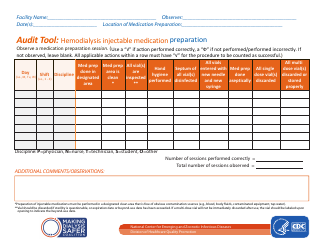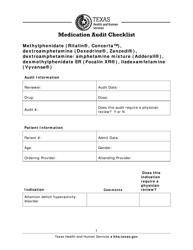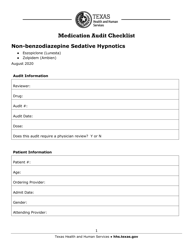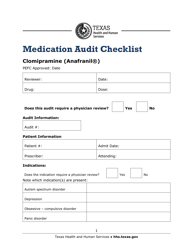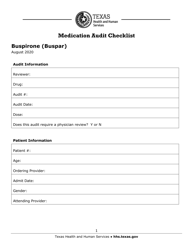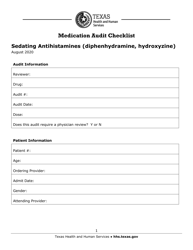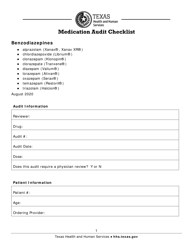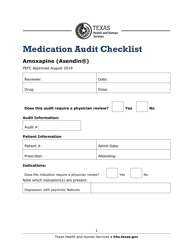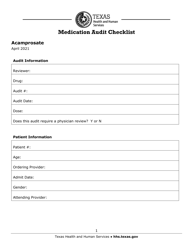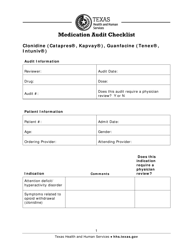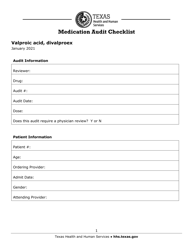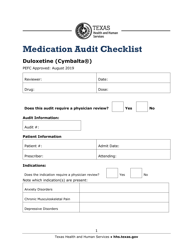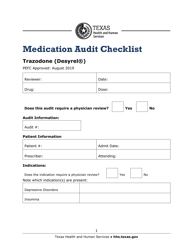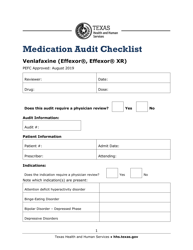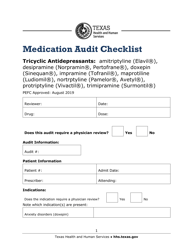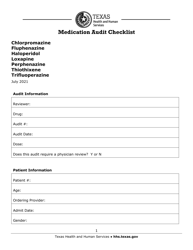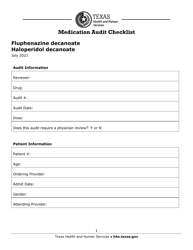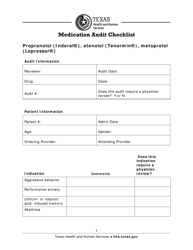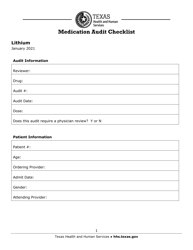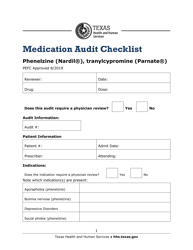Medication Audit Checklist - Lamotrigine - Texas
Medication Audit Checklist - Lamotrigine is a legal document that was released by the Texas Health and Human Services - a government authority operating within Texas.
FAQ
Q: What is the purpose of a medication audit checklist?
A: The purpose of a medication audit checklist is to ensure compliance with medication safety standards.
Q: What is Lamotrigine?
A: Lamotrigine is a medication used to treat epilepsy and bipolar disorder.
Q: What is a medication audit?
A: A medication audit is a process to review medication practices and ensure adherence to regulations and guidelines.
Q: What are the common uses of Lamotrigine?
A: Lamotrigine is commonly used to control seizures in epilepsy and to stabilize mood in bipolar disorder.
Q: What are some potential side effects of Lamotrigine?
A: Common side effects of Lamotrigine include rash, dizziness, headache, and nausea. It is important to consult a healthcare professional for a full list of side effects.
Q: Who can perform a medication audit?
A: A healthcare professional, such as a pharmacist or medication safety officer, can perform a medication audit.
Q: What are the key components of a medication audit checklist?
A: Key components of a medication audit checklist include medication storage, documentation, administration, and disposal.
Q: What should be checked during a medication audit for Lamotrigine?
A: During a medication audit for Lamotrigine, factors such as proper storage, appropriate documentation, correct administration, and safe disposal should be checked.
Q: Why is medication audit important?
A: Medication audit is important to ensure patient safety, identify medication errors, and improve medication management processes.
Form Details:
- The latest edition currently provided by the Texas Health and Human Services;
- Ready to use and print;
- Easy to customize;
- Compatible with most PDF-viewing applications;
- Fill out the form in our online filing application.
Download a printable version of the form by clicking the link below or browse more documents and templates provided by the Texas Health and Human Services.







